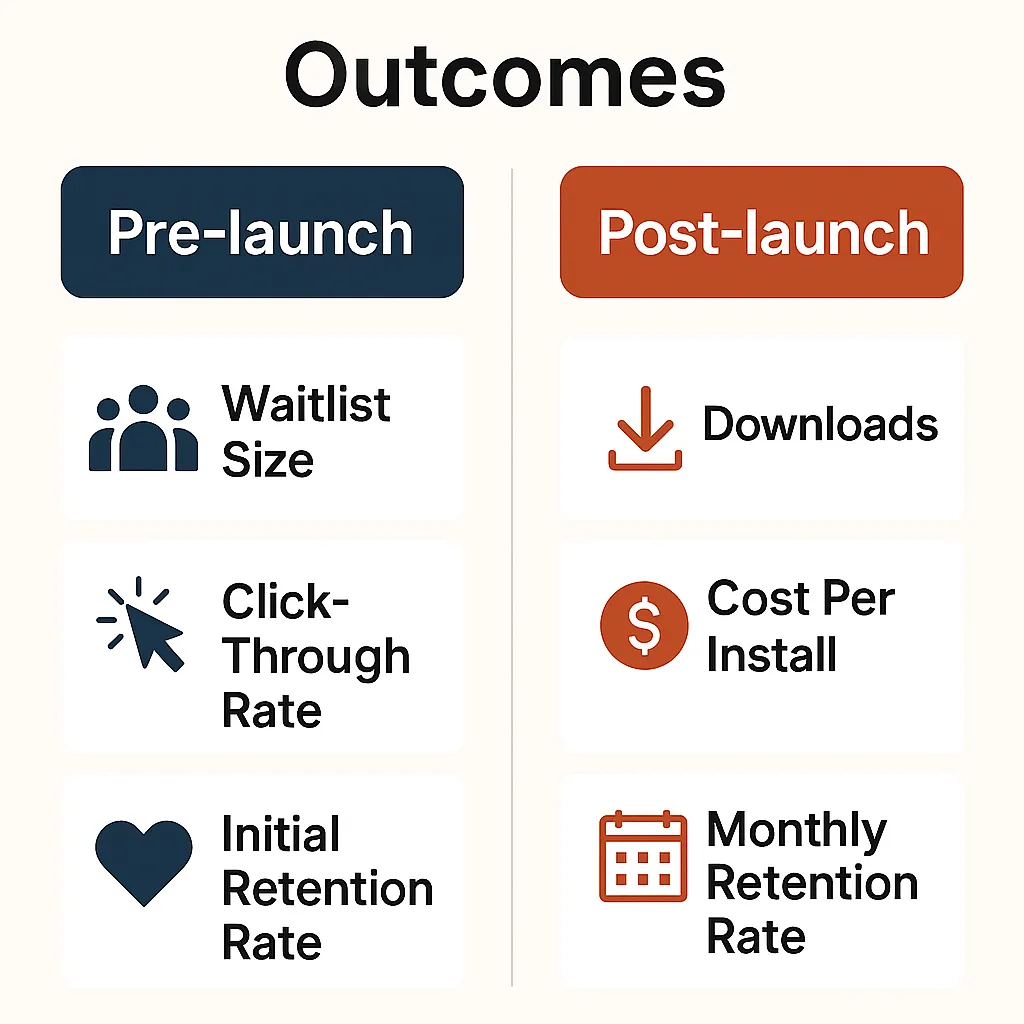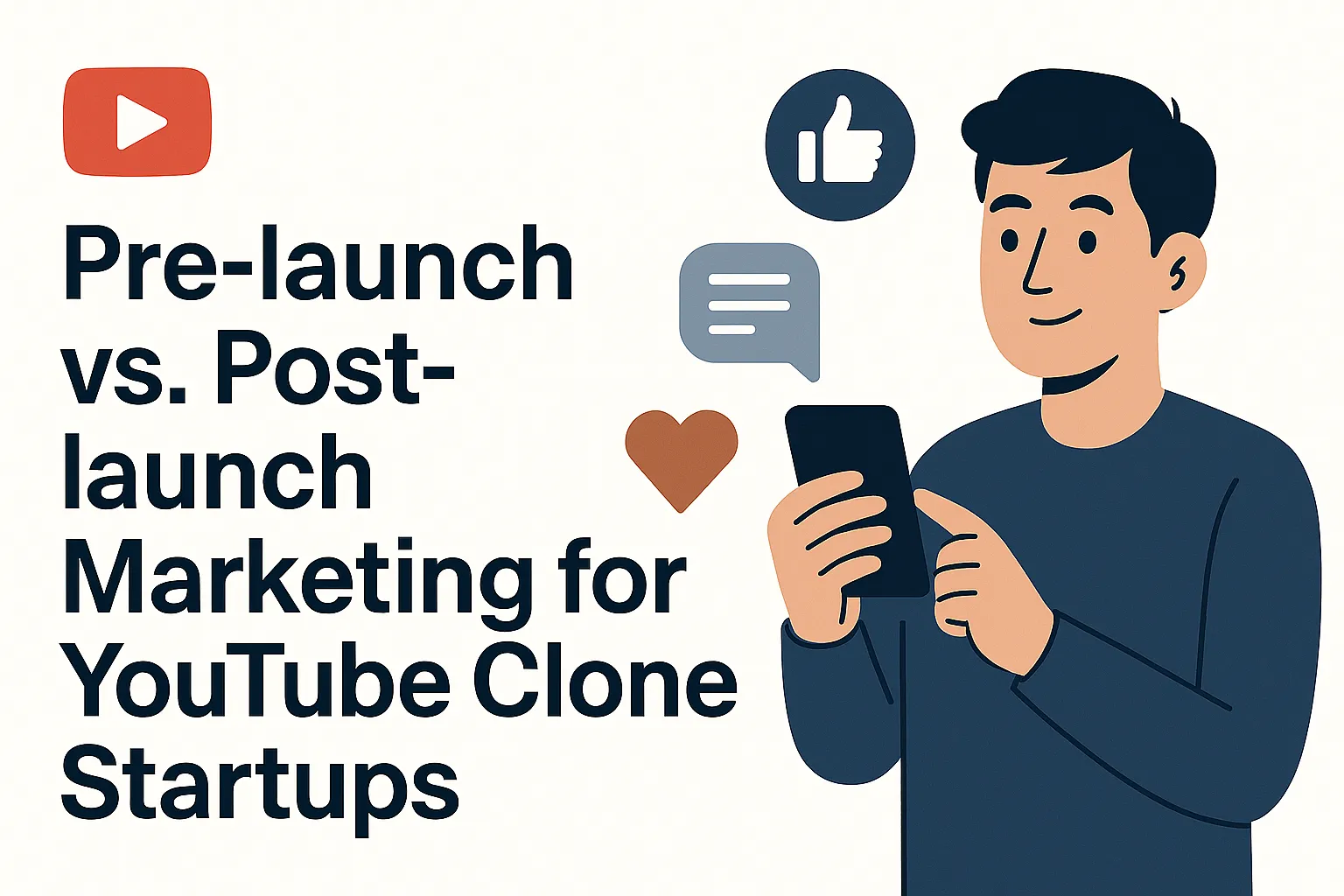You’ve built a YouTube clone—polished UI, video feed smooth as butter, and a recommendation engine that could rival the OG. But here’s the kicker: no one’s watching. Sound familiar? That “if you build it, they will come” myth? Total fiction in the creator economy. Especially in 2025, when even your dog has a streaming channel.
Now imagine this: You’re a week out from launching. The MVP’s ready. You’re glued to your analytics dashboard… but the needle’s not moving. You scramble to run ads, fire off cold emails, and tweet like Statista there’s no tomorrow. But it’s already too late. Why? Because you skipped pre-launch marketing—a make-or-break phase most startups ignore.
Don’t worry, you’re not alone. Many creators and founders confuse product development with audience development. That’s where Miracuves steps in—to help you build and market a monetization-ready YouTube clone like a seasoned growth hacker.

Why Pre-launch Marketing Is Your Startup’s Secret Weapon
The Quiet Before the Storm… or Is It?
Pre-launch is not just about fixing bugs and tweaking filters. It’s about building anticipation like Marvel dropping a teaser for the next Avengers movie. Think of it as your hype season.
YouTube clone apps compete in a saturated pool of short-form video platforms—Moj, Chingari, Roposo, and global beasts like TikTok and Instagram Reels. Without buzz, your app is just another icon in the app store.
Real-world Analogy: The Club No One Talks About
Imagine launching a nightclub but not inviting anyone. That’s what skipping pre-launch feels like. On the flip side, a proper pre-launch brings in waitlists, social proof, early users, and most importantly—feedback loops.
Pre-launch Marketing Strategies That Actually Work
1. Create a Magnetic Landing Page
One page. One goal. Capture emails. Tools like Carrd, Webflow, or Leadpages let you spin up sleek pages fast. Add teaser videos, founder bios, and that magical countdown timer. Keep copy benefit-driven and snackable.
2. Build (and Tease) in Public
Tweet your progress. Share bugs. Run polls. Use platforms like X (Twitter), Reddit, IndieHackers, and even LinkedIn. Let people feel like insiders. The earlier you start this, the more owned audience you build.
“Started from 0 users, now we’re here.” – Every smart founder who tweeted their way to product-market fit.
3. Seed Content Creators Before the Launch
No content, no platform. Reach out to micro-influencers and offer them exclusive early access. Let them upload beta content. Create a creator-only Slack/Discord to share ideas, feedback, and memes.
4. Strategic Giveaways & Early Access
“Win 6 months of Pro + Verified Badge.” Giveaways, especially with viral tools like Gleam or KingSumo, build traction fast. Bonus points if you cross-promote with your creators.
Post-launch Marketing: It’s Show Time, but Stay Hungry
So, launch day arrives. You’ve got users trickling in, content being uploaded, maybe even a few shorts going viral. This is not the finish line—it’s the starting gun.
1. Leverage the “New Kid” Buzz
You’ve got about 2 weeks of “fresh app” curiosity. Use that window. Blast your launch story on Product Hunt, TechCrunch tip submissions, and Reddit forums. Message everyone who said, “Let me know when you go live.”
2. Performance Marketing with Smart Targeting
Start small. Test Facebook/Instagram Reels ads, Google UAC, and TikTok Ads Manager. Target creators, not consumers. A short-form video app without content is like a phone with no contacts.
3. Retarget Like a Pro
90% of your pre-launch visitors won’t convert right away. Use pixel data to retarget them post-launch with testimonials, feature highlights, or new content drops.
4. Community = Compounding Growth
Incentivize uploads. Run contests. Highlight creators in newsletters. Celebrate user milestones (“Top 3 videos this week!”). Give your early adopters a reason to stay and talk about you.
Pre-launch vs Post-launch: Side-by-side Breakdown
| Aspect | Pre-launch Phase | Post-launch Phase |
|---|---|---|
| Goal | Build anticipation & user base | Drive downloads & retain users |
| Audience Engagement | Waitlists, creator invites | Feedback loops, content interaction |
| Channels | Social, email, product communities | Paid ads, in-app campaigns, retargeting |
| Metrics | CTR, sign-ups, email open rates | DAU/MAU, retention, video uploads |
| Content Strategy | Teasers, behind-the-scenes | Tutorials, trending videos, creator spotlights |
| Budget Use | Branding, list building | User acquisition, analytics tools |
Why YouTube Clone Startups Need Both Phases
Skipping either phase is like baking a cake without preheating or icing. Pre-launch gives you momentum. Post-launch keeps it going.
In an ecosystem dominated by short-form content, where virality is both unpredictable and powerful, you need marketing that’s not just smart—it’s strategic. Every swipe, every click, every share counts.
Learn More: Why Startup Choose YouTube Clone Over Custom Development

Build Your Own YouTube Clone App — Want to create your own video platform like YouTube? We’ve got the blueprint.
Conclusion
Pre-launch creates the spark. Post-launch fans the flame. Ignore either, and you’re toast. Successful YouTube clone startups treat marketing like a product—iterative, experimental, and relentless.
At Miracuves, we help innovators launch high-performance app clones that are fast, scalable, and monetization-ready. Ready to turn your idea into reality? Let’s build together.
FAQs
1) What’s the biggest mistake YouTube clone startups make?
Skipping pre-launch entirely or relying only on paid ads post-launch. Audience building must start early.
2) How long should my pre-launch phase last?
Start immediately — with Miracuves delivering your solution in just 3–6 days with guaranteed delivery, you can begin gathering feedback, building anticipation, and refining your pitch right from day one.
3) What’s the best way to find early creators?
Leverage Instagram/TikTok, use creator marketplaces, or cold DM micro-influencers with personalized pitches.
4) Can I relaunch if my post-launch flops?
Absolutely. Many apps go through “re-launches” with better messaging and creator support. Just learn from the first round.
5) Should I focus more on downloads or content?
Content. Always. A YouTube clone lives and dies by creator engagement.
6) How can Miracuves help with marketing?
While we specialize in clone app development, we also guide clients on GTM strategy, monetization, and creator onboarding hacks.








